Software art is a work of art where the creation of software, or concepts from software, play an important role; for example software applications which were created by artists and which were intended as artworks. As an artistic discipline software art has attained growing attention since the late 1990s. It is closely related to Internet art since it often relies on the Internet, most notably the World Wide Web, for dissemination and critical discussion of the works. Art festivals such as FILE Electronic Language International Festival, Transmediale (Berlin), Prix Ars Electronica (Linz) and readme have devoted considerable attention to the medium and through this have helped to bring software art to a wider audience of theorists and academics.
Computer art is any art in which computers play a role in production or display of the artwork. Such art can be an image, sound, animation, video, CD-ROM, DVD-ROM, video game, website, algorithm, performance or gallery installation. Many traditional disciplines are now integrating digital technologies and, as a result, the lines between traditional works of art and new media works created using computers has been blurred. For instance, an artist may combine traditional painting with algorithm art and other digital techniques. As a result, defining computer art by its end product can thus be difficult. Computer art is bound to change over time since changes in technology and software directly affect what is possible.
Information art, which is also known as informatism or data art, is an art form that is inspired by and principally incorporates data, computer science, information technology, artificial intelligence, and related data-driven fields. The information revolution has resulted in over-abundant data that are critical in a wide range of areas, from the Internet to healthcare systems. Related to conceptual art, electronic art and new media art, informatism considers this new technological, economical, and cultural paradigm shift, such that artworks may provide social commentaries, synthesize multiple disciplines, and develop new aesthetics. Realization of information art often take, although not necessarily, interdisciplinary and multidisciplinary approaches incorporating visual, audio, data analysis, performance, and others. Furthermore, physical and virtual installations involving informatism often provide human-computer interaction that generate artistic contents based on the processing of large amounts of data.

Martin John Kemp is a British art historian and exhibition curator who is one of the world's leading authorities on the life and works of Leonardo da Vinci. The author of many books on Leonardo, Kemp has also written about visualisation in art and science, particularly anatomy, natural sciences and optics. Instrumental in the controversial authentication of Salvator Mundi to Leonardo, Kemp has been vocal on attributions to Leonardo, including support of La Bella Principessa and opposition of the Isleworth Mona Lisa.
John C. Goss is an American artist and author and has lived most of his life in the Asia/Pacific region.

Virtual art is a term for the virtualization of art, made with the technical media developed at the end of the 1980s. These include human-machine interfaces such as visualization casks, stereoscopic spectacles and screens, digital painting and sculpture, generators of three-dimensional sound, data gloves, data clothes, position sensors, tactile and power feed-back systems, etc. As virtual art covers such a wide array of mediums it is a catch-all term for specific focuses within it. Much contemporary art has become, in Frank Popper's terms, virtualized.
Relational art or relational aesthetics is a mode or tendency in fine art practice originally observed and highlighted by French art critic Nicolas Bourriaud. Bourriaud defined the approach as "a set of artistic practices which take as their theoretical and practical point of departure the whole of human relations and their social context, rather than an independent and private space." The artist can be more accurately viewed as the "catalyst" in relational art, rather than being at the centre.
Marjorie Franklin is an American conceptual artist and a Professor of Conceptual Art at University of Minnesota in the U.S.A. She uses digital media in interactive installations. Previously, she has worked on CD-ROMs such as "Digital Blood", an interactive narrative comparing two mothers who create an artificial life construct and "She Loves It, She Loves It Not:Women and Technology". In the interactive computer audio and video installations she creates her work focuses on the implications of the culture of computer technology for humans living in industrialised countries.
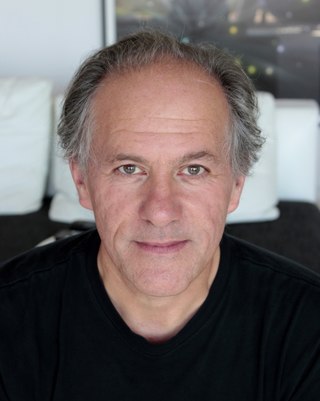
George Legrady is a multidisciplinary digital media artist and university professor in photography and computational media arts.
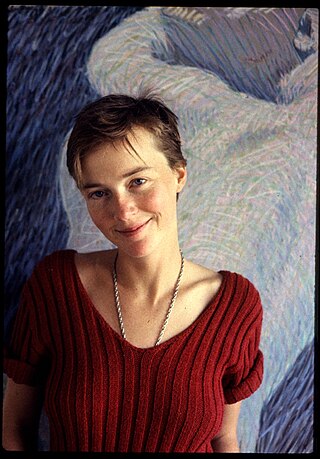
Char Davies is a Canadian contemporary artist known for creating immersive virtual reality (VR) artworks. A founding director of Softimage, Co, she is considered a world leader in the field of virtual reality and a pioneer of bio-feedback VR. Davies is based in rural Quebec and San Francisco.

Edward A. Shanken is an American art historian, whose work focuses on the entwinement of art, science and technology, with a focus on experimental new media art and visual culture. Shanken is Professor, Arts Division, at UC Santa Cruz. His scholarship has appeared in numerous journals and anthologies and has been translated into many languages. Shanken is the author of Art and Electronic Media, among other titles.
Erin Manning is a Canadian cultural theorist and political philosopher as well as a practicing artist in the areas of dance, fabric design, and interactive installation. Manning's research spans the fields of art, political theory, and philosophy. She received her Ph.D in Political Philosophy from University of Hawaii in 2000. She currently teaches in the Concordia University Fine Arts Faculty.

New media art includes artworks designed and produced by means of electronic media technologies, comprising virtual art, computer graphics, computer animation, digital art, interactive art, sound art, Internet art, video games, robotics, 3D printing, and cyborg art. The term defines itself by the thereby created artwork, which differentiates itself from that deriving from conventional visual arts. New Media art has origins in the worlds of science, art, and performance. Some common themes found in new media art include databases, political and social activism, Afrofuturism, feminism, and identity, a ubiquitous theme found throughout is the incorporation of new technology into the work. The emphasis on medium is a defining feature of much contemporary art and many art schools and major universities now offer majors in "New Genres" or "New Media" and a growing number of graduate programs have emerged internationally. New media art may involve degrees of interaction between artwork and observer or between the artist and the public, as is the case in performance art. Yet, as several theorists and curators have noted, such forms of interaction, social exchange, participation, and transformation do not distinguish new media art but rather serve as a common ground that has parallels in other strands of contemporary art practice. Such insights emphasize the forms of cultural practice that arise concurrently with emerging technological platforms, and question the focus on technological media per se. New Media art involves complex curation and preservation practices that make collecting, installing, and exhibiting the works harder than most other mediums. Many cultural centers and museums have been established to cater to the advanced needs of new media art.

Marina Gržinić is a philosopher, theoretician, and artist from Ljubljana. She is a prominent contemporary theoretical and critical figure in Slovenia. Since 1993, she is employed at the Institute of Philosophy at the Scientific and Research C |title= enter of the Slovenian Academy of Science and Arts. Today, she serves as a professor and research adviser. For her scientific work, she received the Golden SASA sign in 2007. Since 2003, she has also served as a Full Professor at the Academy of Fine Arts in Vienna, Austria. She publishes extensively, lectures worldwide, and is involved in video art since 1982.
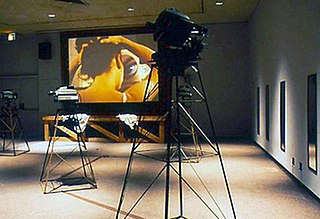
Dorit Cypis is a Canadian-American artist, mediator and educator based in Los Angeles. Her work has collectively explored themes of identity, history and social relations through installation art, photography, performance and social practice. After graduating from California Institute for the Arts (CalArts), she attracted attention in the 1980s and 1990s for her investigations of the female body, presented in immersive installation-performances at the Whitney Museum, International Center of Photography, San Francisco Museum of Modern Art (SFMOMA), and Musée d'art contemporain de Montréal. Counter to much feminist work of the time, Cypis focused on interiority and personal mythologies rather than exterior political realms, and according to art historian Elizabeth Armstrong, made a significant contribution to discourse about the representation of women and female sexuality.
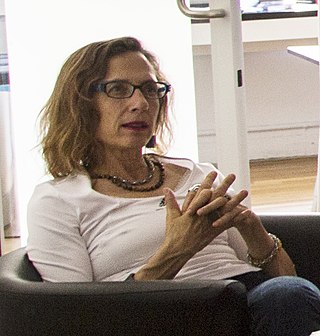
Claudia Hart is an artist and associate professor in the Department of Film, Video, New Media, Animation at the School of the Art Institute of Chicago, Chicago, Illinois. She has been active as an artist, curator and critic since 1988. She creates virtual representations that take the form of 3D imagery integrated into photography, animated loops and multi-channel animation installations.
Jan Wurm is an American painter, educator and curator. Her work comes out of a figurative tradition rooted in social commentary. Wurm draws on a combination of modern German, Austrian, and American aesthetics to depict human interactions and daily life.
Jo Hanson (1918–2007) was an American environmental artist and activist. She lived in San Francisco, California. She was known for using urban trash to create works of art.

Nina Czegledy is a Canadian artist, new media art curator and writer.
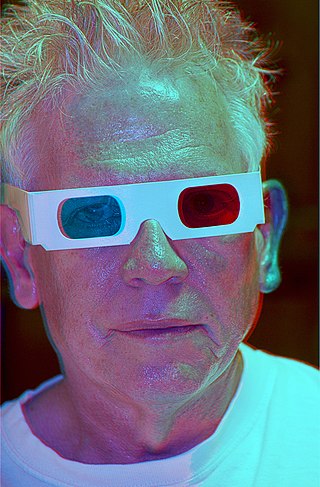
Fred Truck is an American artist currently living in Des Moines, Iowa. He is noted for his performance art and cartoon imagery using painting, sculpture and digital constructions. In 1986, he was a co-creator of the Art Com Electronic Network, an online collaboration site for artists during the early days of the Internet. His work has been exhibited at the Museum of Modern Art (MoMA) as well as other museums and galleries in the USA and Japan. Throughout his career, his media have included software, virtual reality, graphics, sculpture, born-digital prints, and computer graphic design.











